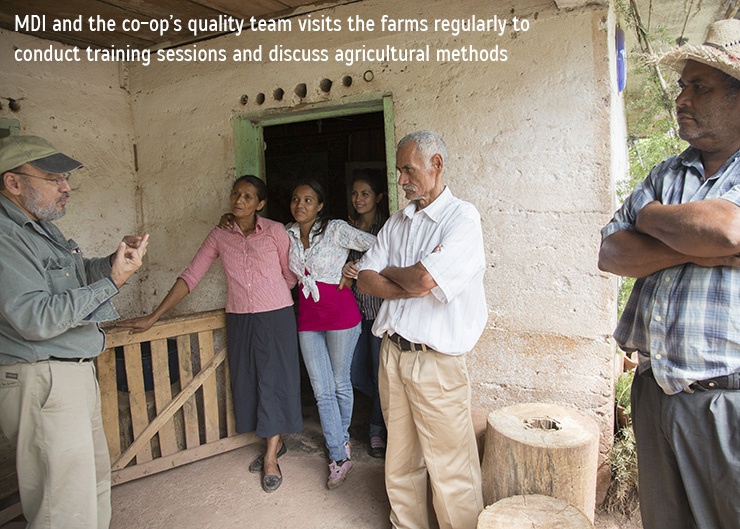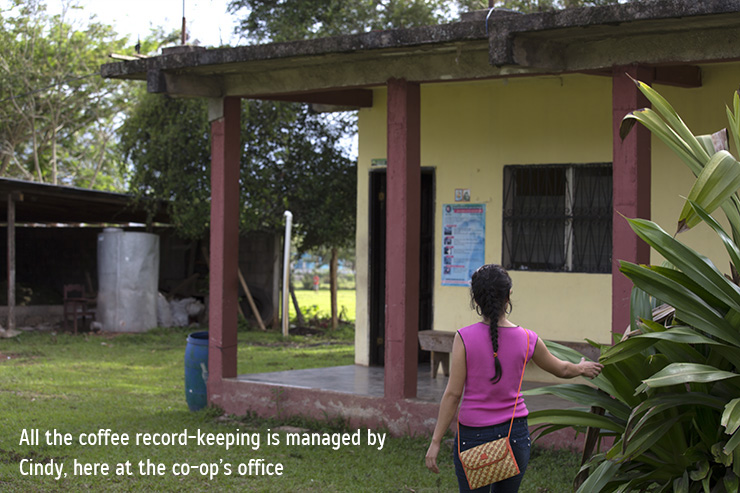
The bean intake process begins long before the harvest,” explains Rich Trubey, program developer and
co-founder of the Massachusetts-based Mesoamerican Development Institute. MDI works with
Co-operativa COMISUYL on cultivation techniques and processing, so Rich knows the system very well.
“Several times each growing season,” he continues, “COMISUYL’s quality team visits the farms, where they conduct training sessions and carry out on-site quality assessments.” Those visits allow the co-op to negotiate harvest prices with each farmer.

Yearly harvest records are kept for every farm, starting when the farmer brings each day’s harvest to the nearest “wet mill” for washing and depulping. The co-op runs one of these wet mills itself, and plans over time to establish more under its own control, to ensure absolutely consistent standards and record-keeping for all participants.
When the washed, depulped “wet beans” arrive at the co-op, they are again entered into the farm’s records. “The coffee is tagged according to the farm or cluster of farms,” says Rich, “and all the relevant information noted — the exact amount of coffee received, a checklist of its characteristics, and the date.”

Then, when each farm’s coffee enters the production line for preparation, its potential defects are assessed against a standard list used internationally and cross-referenced with the quality levels sought by the co-op with that farm.
Quality, in other words, is a major consideration throughout the intake process. “The result is valuable historical data about quality,” notes Rich. “It allows the co-op to identify the most pressing issues, and work on them — and, year by year, further improve the quality of their product.”
- Keep checking this page: we will be writing more, step by step, about the process that brings Cafe Solar from the mountains of Honduras to your coffee cup
- .
Next Week: Coffee Processing with Solar Energy - And mark your calendar: the 2014-15 harvest will be available this May!

